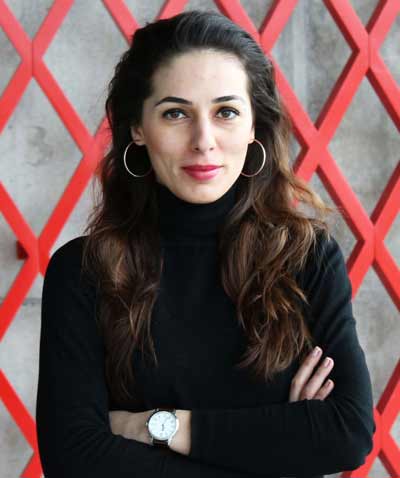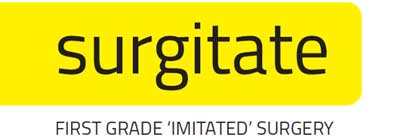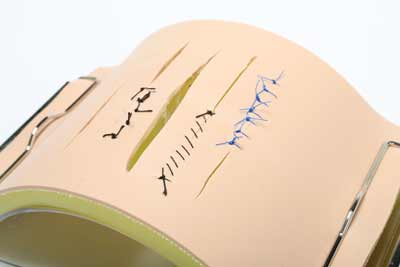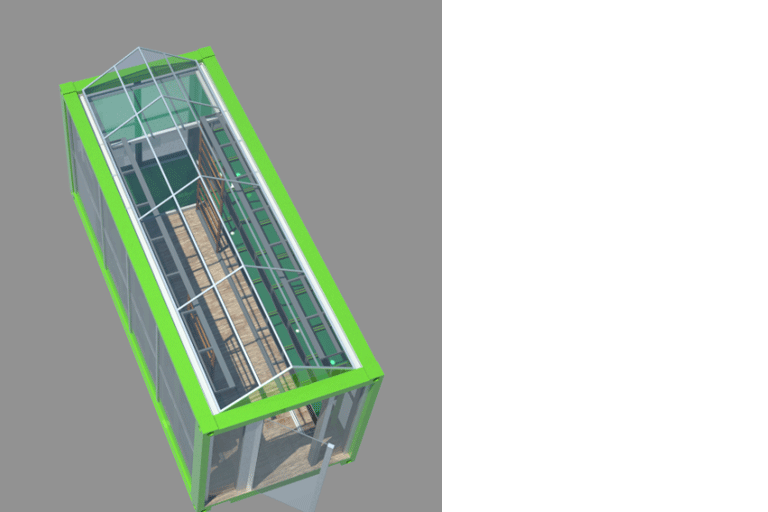By Catherine Jewell, Communications Division, WIPO
Dr. Özge Akbulut is a materials scientist and a woman determined to use her talents to make a positive impact on some of the major challenges facing the world, one invention at a time. Her inventions range from synthetic models of body parts for surgical training to 3D printing inks and cement. She holds five patents – four in the United States and one in Europe – with an additional application in progress.

her talents to make a positive impact on some of the major challenges
facing the world, one invention at a time. Her inventions range from
synthetic models of body parts for surgical training to 3D printing inks
and cement. She holds five patents with an additional application
in progress (photo: Courtesy of Surgitate).
Dr. Akbulut completed her PhD at the Massachusetts Institute of Technology (MIT) and then joined Harvard University in the United States for her postdoctoral studies. In 2012, she returned to her alma mater, Sabanci University in Turkey, as an assistant professor.
She talks to WIPO Magazine about her work and the challenges of innovation in an emerging economy.
When did you start inventing?
Becoming an inventor was really a natural consequence of being an engineer. But I was always a very curious child and had very supportive parents. What really inspires me is how science and technology makes it possible to find solutions to tackle some of the major problems facing humanity. It is only with innovative solutions that we can solve these problems.
As a scientist, I think it is critically important to invest in finding solutions to the technological challenges facing society. After all, my research is supported by taxpayers’ money. People fund research because they believe scientists will produce something that will improve their lives. Society-driven research is really important to me.
I started making surgical models through pure chance. In my postdoctoral work at Harvard, I focused on medical applications of materials science to develop tools and techniques for resource-limited settings. A few years later, I met a thoracic surgeon who asked if I could make models of breasts to train surgeons in oncoplastic surgery (reconstructive surgery after a lumpectomy). Breast cancer is a global problem – it affects one in eight women – so this really caught my attention. And with new diagnostic tools, many younger women are being treated for breast cancer so it is really important that they can adapt and continue their lives. I really liked the idea of being able to have an impact on global health education.
To cut a long story short, I was lucky enough to meet a brilliant visual artist, Ece Budak, who together with her local women’s group helped me create the molds. When she presented me with a full box of breast models, it was one of the best engineering moments of my life. That’s how we started. We worked very closely with surgeons to develop the models according to their specific needs. Beta testing of the first model involved multiple iterations and took six months.
I co-founded Surgitate with Barkin Eldem MD in 2014. We specialize in making realistic models of tissue and organs so trainee surgeons can practice their surgical technique. Our product portfolio includes a range of skin pads, vascular and breast models which closely mimic the experience of cutting into, dissecting and suturing human tissue. We are also working on breast models for ultrasonography training as well as for bronchoscopy, tracheostomy and sentinel lymph node dissection. We are currently working on a unique micro-surgery model for surgeons to be able to improve their intricate suturing skills.
We’ve been getting some very good feedback from the surgeons we work with and our models are now being used in Australia and United Kingdom. Our skin model is available from Amazon UK and is already being used in more than 20 countries!
How did you go about protecting your models?

MD in 2014 (photo: Courtesy of Surgitate).
We have registered a trademark for them. We submitted a patent application but it didn’t pass. We went about it the wrong way and learned a great deal from the process. We are the only company in the world to produce stand-alone breast models, and the surgeons we work with, who played a key role in the development of the models, are strong advocates of their use in surgical training. As a startup we are very responsive to the needs of our users, and committed to providing affordable and accessible models through cost-controlled design and fabrication. That gives us an edge. But in the end, the need is so great that the more people who develop devices like these, the better for everyone. Although we didn’t succeed in getting a patent for these models, we are developing and using almost 50 different formulations of silicone in our products, and have developed intellectual property (IP) strategies around these. IP rights are an important part of our business strategy
Did you get any support from your university?
Yes, without the support of Sabanci University’s Technology Transfer Office I would not have been able to survive as a researcher. They provided a wealth of invaluable advice and support in terms of developing a business plan and an IP strategy for the various technologies I have been working on.
As a researcher, why do you think it is important for universities to have an IP policy?
The well-being of society and its advancement depend on science and technology, but how do we ensure that they produce concrete outcomes? The IP system offers universities and researchers an incentive to invest in developing solutions that enable society to make progress in tackling global problems. IP and IP licensing offer concrete opportunities for them to generate wealth, create jobs and really make a difference through science. So IP is extremely important.
Technology licensing is still quite new in Turkey. We really need to strengthen university-industry links for if it to take off. We need our industrialists to be more open to working with scientists, and vice versa. Investment in research and development is gaining traction but remains low compared to other countries. Scientists also need to focus at least part of their research on solving societal problems. If we are to move forward, we all need to simply roll up our sleeves and get on with the work of developing products that are better than existing ones and acquiring IP rights to protect them. If these products fulfill a market need, the financial rewards will come. Sabanci University has very strong links with industry and really encourages spin-offs. Around half of my fellow faculty members have their own company. In fact, the University has topped Turkey’s innovation and creativity index for some years now. We are very proud of that.

What challenges did you face in establishing your company?
I was very lucky to find two pre-revenue investors. That was critical. The first is the Arya Women Investment Platform, which is the first of its kind in Turkey. It was founded by the president of Turkey’s leading plastic auto parts manufacturer, Farplas, who is very committed to supporting female entrepreneurs in Turkey, where fewer than nine percent of entrepreneurs are women. We rely on Farplas’s expertise in process development, molding and painting for the mass production of our models. The other investor is Inovent, Turkey’s first technology commercialization accelerator and seed funding company. Inovent helps us connect with potential investors and customers, and handles our business and marketing plans.
With the support of my University and investors, we managed to pull it off. But many of my fellow researchers have a hard time dealing with all the red tape associated with setting up and running a business. Bureaucracy just kills creativity. Thankfully I was able to learn from their experience.
Another big challenge is linked to the fact that most of my clients are outside Turkey. The duties associated with exporting our products place a heavy burden on the business. My hope is that in future Turkey will become more open and better connected to global markets. This would make life a lot easier for Turkey’s small businesses to thrive.
What other projects are you working on?

models which closely mimic the experience of cutting into, dissecting
and suturing human tissue. The surgeons the company works with to
develop them are strong advocates of their use in surgical
training. (photo: Courtesy of Surgitate).
As a materials engineer, my work is wide-ranging. My aim is to mobilize collective brainpower wherever I can. So in addition to the surgical models, I am developing inks for use in additive manufacturing or 3D printing. Most 3D printing inks include three or four different chemicals and can only be used in a controlled environment. My technology works in a totally aqueous environment. Anyone can use it anywhere, and very safely. I think it will revolutionize 3D printing in the sense that if you give people something they can use in their homes or in public maker spaces then more of them will start using it. That is why it is so important to make sure technology leaves the lab and gets into public spaces. We submitted our patent application for this technology in September 2016 via WIPO’s Patent Cooperation Treaty which streamlines the process of getting patent protection in multiple countries.
I also have a patent on controlling the flow properties of cement! When working with special-purpose cement like calcium aluminate cement, once it has been mixed, you only have a very limited time to cast it before it hardens. Our technology prolongs that time, thereby expanding opportunities for its use and generating significant cost savings. These types of cement are highly resistant and can withstand extreme temperatures, seawater and more. There is a lot of commercial interest in our technology, and we are currently in talks with a global leader in the field.
What message do you have for policymakers?
If policymakers want to leave a legacy, they have to take a long-term view supported by scientific data. That is the only way humanity will advance. They have to think about future generations because what they decide today will have a huge impact on them.
And what message do you have for young girls with aspirations to invent?
Inventing is good. Women are very tough and very driven, and if we want something we usually get it. That mindset is a key part of the invention process. Science and technology – with a good dose of IP – offer you the chance to make a difference. Developing an innovative solution with the potential to improve people’s lives is extremely fulfilling. Inventing is a lifestyle and I would like women to have equal opportunity to make that lifestyle choice. Whether you are a man or a woman, being an inventor can be tough. But if at first you don’t succeed you just have to dust yourself off and move on.
Did you face any particular problems as a woman inventor? Why are there so few women inventors?
No. I am an inventor first. I really like being a scientist. That is where I can make a difference. The fact that I am a woman is incidental. My bosses, both male and female, have always been very supportive, as has my family.
There are many more male inventors because their number in science, engineering and technology is higher to start with. If only 15 or 20 percent of researchers are female then women will only be responsible for 15 or 20 percent of inventions. It’s a numbers issue, not a quality issue. Women are just getting started. And I am grateful for those persistent women who refused to take no for an answer and who became the first women scientists, engineers, doctors. Women like Mildred Dresselhaus, known as the “queen of carbon science,” who was the first woman to secure a professorship at MIT, and who sadly passed away just recently. We are here because of them.



